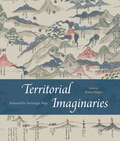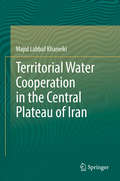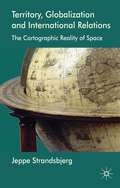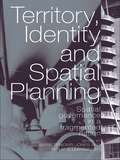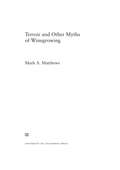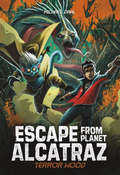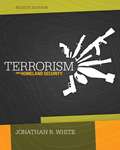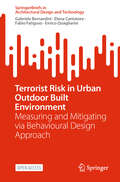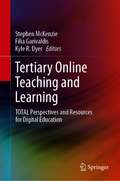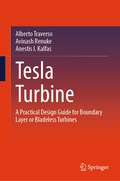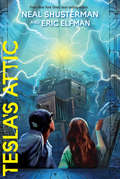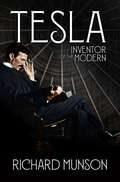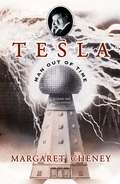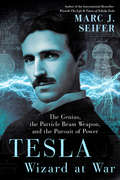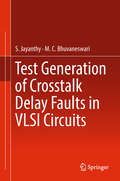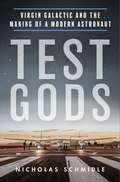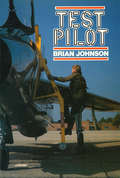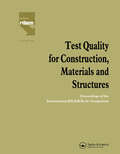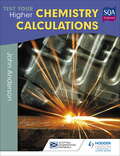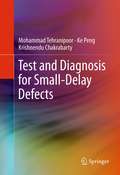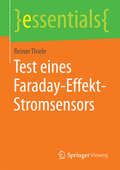- Table View
- List View
Territorial Imaginaries: Beyond the Sovereign Map
by Kären WigenFresh offerings on world mapping beyond Western conventions. This strikingly colorful volume contends that modern mapping has never been sufficient to illustrate the complex reality of territory and political sovereignty, whether past or present. For Territorial Imaginaries, editor Kären Wigen has assembled an impressive slate of experts, spanning disciplines from political science to art history, to contribute perspectives and case studies covering three main themes: mapping before the nation-state, rethinking and critiquing mapping practices, and robust traditions of counter-cartography. Each contributor proposes alternative ways to think about mapping, and the essays are supported with rich archival documentation. Among the far-reaching case studies are Barbara Mundy’s cartographic history of Indigenous dispossession in the Americas, Peter Bol’s examination of two Chinese maps created five hundred years apart, and Ali Yaycıoğlu’s exploration of tensions between top-down and bottom-up mapping of Habsburg and Ottoman border claims.
Territorial Landscapes Solutions for Sustainable Energy and Food Security (Sustainable Landscape Planning and Natural Resources Management)
by Mourad Amer Mohamed El Kaftangui Ibrahim El-Sayed Maarouf Nauman Khalid Sharul Sham Bin DolThis book introduces a model for the built environment, designed to incorporate sustainability at every level. It emphasizes the integration of environmental, social, and economic factors to create resilient urban spaces. Also, it presents a decision support system that optimizes energy management for sustainability, enabling real-time adjustments and reducing carbon footprints. It discusses innovative strategies for managing water and wastewater in swampland areas, offering insights from UIN Raden Fatah Palembang's adaptation efforts. Also, this book provides a thorough review of bio-based business models, examining their agility and adaptability in fostering sustainable innovations that respond to market and environmental changes. Moreover, the book explores a novel approach to renewable energy, this chapter assesses the feasibility of using vortex bladeless wind turbines for energy generation at airport runways, offering both conceptual and economic analyses. In addition to discuss the creation and role of multi-actor forums in promoting a sustainable blue economy in the Black Sea region, emphasizing collaborative efforts to preserve marine resources. This book investigates the use of halophyte biochar as a sustainable soil amendment for sandy soils, demonstrating its potential to improve soil quality and promote sustainable agriculture. Also, the book aims to assess the sustainability of food-energy-water systems at the household level, advocating for integrated solutions that enhance resource efficiency and sustainability. This book delves into societal perceptions of climate change adaptation, using interaction analysis to better understand public attitudes and their implications for policy and communication strategies. This book presents a case study from Istanbul, offering insights into how local identity can strengthen community resilience and sustainability efforts. Finally the book provides a comprehensive guide to understanding and implementing sustainable practices across various sectors, from energy management and water resources to food systems and environmental education. It emphasizes the importance of interdisciplinary approaches and innovation agility in addressing global sustainability challenges.
Territorial Water Cooperation in the Central Plateau of Iran
by Majid Labbaf KhaneikiThis book tries to answer the question how different communities in such an arid area as the Iranian central plateau could have shared their limited water resources in a perfect harmony and peace over the course of history. They invented some indigenous technologies as well as cooperative socio-economic systems in order to better adapt themselves to their harsh environment where the scarce water resources had to be rationed among the different communities as sustainably as possible. Those stories hold some lessons for us on how to adjust our needs to our geographical possibilities while living side by side with other people. This work gives insight into the indigenous adaptation strategies through the territorial water cooperation, and describes how water can appear as a ground for cooperation. It explains the water supply systems and social aspects of water in central Iran. Topics include the territorial water cooperation, qanat’s, the traditional water management and sustainability, the socio-economic context, the sustainable management of shared aquifers system and more.
Territory, Globalization and International Relations
by Jeppe StrandsbjergGlobalization and changes to statehood challenge our understanding of space and territory. This book argues that we must understand that both the modern state and globalisation are based on a cartographic reality of space. In consequence, claims that globalization represents a spatial challenge to state territory are deeply problematic.
Territory, Identity and Spatial Planning: Spatial Governance in a Fragmented Nation
by Philip Allmendinger Mark Tewdwr-JonesThis book provides a multi-disciplinary study of territory, identity and space in a devolved UK, through the lens of spatial planning. It draws together leading internationally renowned researchers from a variety of disciplines to address the implications of devolution upon spatial planning and the rescaling of UK politics. Each contributor offers a different perspective on the core issues in planning today in the context of New Labour’s regional project, particularly the government’s concern with business competitiveness, and key themes are illustrated with important case studies throughout.
Terroir and Other Myths of Winegrowing
by Mark A. MatthewsWine is a traditional product with traditional explanations. Oft-romanticized, Old World notions of how to create fine wine have been passed down through generations and continue to dominate popular discussions of wine quality. However, many of these beliefs predate science and remain isolated from advances in the understanding of how crops grow and fruit ripens. Allegiance to them has frequently impeded open-minded investigation into how grapevines interact with the environment, thus limiting innovation in winegrowing. In Terroir and Other Myths of Winegrowing, Mark A. Matthews applies a scientist's skepticism and scrutiny to examine widely held beliefs about viticulture. Is terroir primarily a marketing ploy that obscures understanding of which environments really produce the best wine? Is reducing yield an imperative for high quality grapes and wine? What does it mean to have vines that are balanced or grapes that are physiologically mature? Matthews explores and dissects these and other questions to debunk the myths of winegrowing that may be holding us back from achieving a higher wine quality.
Terror Wood (Escape from Planet Alcatraz)
by Michael DahlErro and Zak Nine are hiding in the Phantom Forest, a dark wood filled with giant, towering trees and dangerous beasts. The boys hide high above the ground, climbing and jumping between the tree branches. So far they've avoided dangerous creatures such as huge, hairy rats and giant, bloodthirsty spiders. But a new predator has caught the boys' scent. An enormous flying serpent chases after them and won't stop until its hunger is satisfied! How will Zak and Erro avoid becoming dinner for this deadly new monster?
Terrorism and Homeland Security (Eighth Edition)
by Jonathan R. WhiteWritten by acclaimed national terrorism expert Jonathan R. White, the market-leading TERRORISM AND HOMELAND SECURITY is widely recognized as the most comprehensive, balanced, and objective terrorism book available. In the Eighth Edition, White continues to provide a theoretical and conceptual framework that enables readers to understand how terrorism arises and how it functions. Packed with cutting-edge coverage, the book discusses the most sophisticated theories of the world's best terrorist analysts, while still focusing on the domestic and international threat of terrorism and the basic security issues surrounding terrorism today.
Terrorist Risk in Urban Outdoor Built Environment: Measuring and Mitigating via Behavioural Design Approach (SpringerBriefs in Architectural Design and Technology)
by Gabriele Bernardini Fabio Fatiguso Enrico Quagliarini Elena CantatoreThis open access book outlines the latest results in analysing, assessing, and managing terrorist risk in the urban outdoor built environment. In detail, contents refer to the outdoor Open Areas (such as streets, squares, urban parks and other public spaces in our cities) exposed to such violent events considering the physical elements and properties of the built environment and users. PThe built environment features, including layout, use and management, are combined with terrorist threats issues and user behaviours in emergency conditions, to determine a set of complementary tools for the reduction of risk and increase of urban resilience. The contents hence provide different levels of tool analysis, for risk scenario definition, risk assessment, mitigation strategies design and effectiveness evaluation, considering traditional approaches about the issue along with simulation-based approaches relying on understanding and representing user behaviors. This “behavioural design” approach offers the opportunity to manage the level of risk for specific real urban cases over going the normative limitations in Europe that are only referred to few countries and sometimes deal with the prevention of violent acts by intelligence activities as the exclusive way to face this issue. In addition, the focus on the characters of cultural and historic places and their resilience is increasing by means of introduction of mitigation and compatible solutions providing a complementary chapter for the design of resilient cities in all of their peculiarities (peripheries, consolidated, and historical). In this sense, it is one of the first organized attempts to analyse the main limitations of current solutions in these outdoor Open Areas and, at the same time, to clearly introduce the importance of human behaviours and the various choices in emergency evacuation conditions, thanks to the proposed behavioural-based simulation approach. The attention is focused on a critical aspect for historic spaces, where morphological conditions are fixed values. Thus, this book represents a sort of guidelines about these user-related issues during such violent events and is useful to both professionals and researchers in the areas of security and urban administration.
Tertiary Online Teaching and Learning: TOTAL Perspectives and Resources for Digital Education
by Kyle R. Dyer Stephen McKenzie Filia GarivaldisThis book is the first comprehensive and integrated guide to online education. It systematically presents all aspects of the emerging “big picture” of online education, providing a broad range of information and insights from online experts, learners, teachers, developers and researchers.The book introduces readers to online education and reveals its potential for bringing about a paradigm shift in education. It describes avenues for increasing the value of the online education medium and examines techniques for improving the online student experience. It also offers a wealth of real-world examples and experiences and shares recommendations on how to improve them, provided by students, teachers, developers, and researchers.Accordingly, the book equips readers – including online learners, teachers, researchers, developers, and administrators – to optimally participate in and contribute to current and future online education advances.
Tesla Turbine: A Practical Design Guide for Boundary Layer or Bladeless Turbines
by Alberto Traverso Avinash Renuke Anestis I. KalfasThis book aims at providing the reader with up-to-date knowledge about Tesla turbine features, mechanical design, and performance characteristics. A Tesla machine, in general, is characterised by the absence of rotating blades, therefore it is also called bladeless or boundary layer machine. In this book, suitable numerical approaches for the fluid-dynamic analysis are described, with practical examples related to physical prototypes designed, built and operated by the Authors. Interest in small scale turbines is growing mainly for energy efficiency and power recovery in a variety of applications. Considering small scales, conventional bladed turbines impose manufacturing limitations, lower performance and higher cost, which hinder their implementation. Tesla bladeless turbomachines are being re-discovered due to many advantages such as their simple design and ease of manufacturing with acceptable performance, especially for small-scale power generation and energy harvesting. To contribute to the spread of efficient and viable Tesla turbines (or expanders), this book presents holistic design guidelines to Tesla turbines, encompassing geometrical definition of Tesla rotor, of Tesla stator, of Tesla rotor-stator-casing assembly, providing practical correlations to take into account various loss mechanisms, and discussing the optimal design point definition for such type of century-aged but always young turbines.
Tesla's Attic (The Accelerati Trilogy #1)
by Neal Shusterman Eric ElfmanAfter their home burns down, fourteen-year-old Nick, his younger brother, and their father move into a ramshackle Victorian house they've inherited. When Nick opens the door to his attic room, he's hit in the head by a toaster. That's just the beginning of his weird experiences with the old junk stored up there. After getting rid of the odd antiques in a garage sale, Nick befriends some local kids-Mitch, Caitlin, and Vincent-and they discover that all of the objects have extraordinary properties. What's more, Nick figures out that the attic is a strange magnetic vortex, which attracts all sorts of trouble. It's as if the attic itself has an intelligence . . . and a purpose.Ultimately Nick learns that the genius Nikola Tesla placed the items-his last inventions-in the attic as part of a larger plan that he mathematically predicted. Nick and his new friends must retrieve everything that was sold at the garage sale and keep it safe. But the task is fraught with peril-in addition to the dangers inherent in Tesla's mysterious and powerful creations, a secret society of physicists, the Accelerati, is determined to stop Nick and alter destiny to achieve its own devious ends. It's a lot for a guy to handle, especially when he'd much rather fly under the radar as the new kid in town.Fans of intrigue, action, humor, and nonstop surprises are guaranteed a read unlike any other in Tesla's Attic, Book One of the Accelerati Trilogy.
Tesla: Inventor Of The Modern
by Richard MunsonTesla’s inventions transformed our world, and his visions have continued to inspire great minds for generations. Nikola Tesla invented the radio, robots, and remote control. His electric induction motors run our appliances and factories, yet he has been largely overlooked by history. In Tesla, Richard Munson presents a comprehensive portrait of this farsighted and underappreciated mastermind. When his first breakthrough—alternating current, the basis of the electric grid—pitted him against Thomas Edison’s direct-current empire, Tesla’s superior technology prevailed. Unfortunately, he had little business sense and could not capitalize on this success. His most advanced ideas went unrecognized for decades: forty years in the case of the radio patent, longer still for his ideas on laser beam technology. Although penniless during his later years, he never stopped imagining. In the early 1900s, he designed plans for cell phones, the Internet, death-ray weapons, and interstellar communications. His ideas have lived on to shape the modern economy. Who was this genius? Drawing on letters, technical notebooks, and other primary sources, Munson pieces together the magnificently bizarre personal life and mental habits of the enigmatic inventor. Born during a lightning storm at midnight, Tesla died alone in a New York City hotel. He was an acute germaphobe who never shook hands and required nine napkins when he sat down to dinner. Strikingly handsome and impeccably dressed, he spoke eight languages and could recite entire books from memory. Yet Tesla’s most famous inventions were not the product of fastidiousness or linear thought but of a mind fueled by both the humanities and sciences: he conceived the induction motor while walking through a park and reciting Goethe’s Faust. Tesla worked tirelessly to offer electric power to the world, to introduce automatons that would reduce life’s drudgery, and to develop machines that might one day abolish war. His story is a reminder that technology can transcend the marketplace and that profit is not the only motivation for invention. This clear, authoritative, and highly readable biography takes account of all phases of Tesla’s remarkable life.
Tesla: Inventor of the Electrical Age
by W. Bernard CarlsonThe definitive account of Tesla's life and workNikola Tesla was a major contributor to the electrical revolution that transformed daily life at the turn of the twentieth century. His inventions, patents, and theoretical work formed the basis of modern AC electricity, and contributed to the development of radio and television. Like his competitor Thomas Edison, Tesla was one of America's first celebrity scientists, enjoying the company of New York high society and dazzling the likes of Mark Twain with his electrical demonstrations. An astute self-promoter and gifted showman, he cultivated a public image of the eccentric genius. Even at the end of his life when he was living in poverty, Tesla still attracted reporters to his annual birthday interview, regaling them with claims that he had invented a particle-beam weapon capable of bringing down enemy aircraft.Plenty of biographies glamorize Tesla and his eccentricities, but until now none has carefully examined what, how, and why he invented. In this groundbreaking book, W. Bernard Carlson demystifies the legendary inventor, placing him within the cultural and technological context of his time, and focusing on his inventions themselves as well as the creation and maintenance of his celebrity. Drawing on original documents from Tesla's private and public life, Carlson shows how he was an "idealist" inventor who sought the perfect experimental realization of a great idea or principle, and who skillfully sold his inventions to the public through mythmaking and illusion.This major biography sheds new light on Tesla's visionary approach to invention and the business strategies behind his most important technological breakthroughs.
Tesla: Man Out of Time
by Margaret CheneyIn this “informative and delightful” (American Scientist) biography, Margaret Cheney explores the brilliant and prescient mind of Nikola Tesla, one of the twentieth century’s greatest scientists and inventors.In Tesla: Man Out of Time, Margaret Cheney explores the brilliant and prescient mind of one of the twentieth century's greatest scientists and inventors. Called a madman by his enemies, a genius by others, and an enigma by nearly everyone, Nikola Tesla was, without a doubt, a trailblazing inventor who created astonishing, sometimes world-transforming devices that were virtually without theoretical precedent. Tesla not only discovered the rotating magnetic field -- the basis of most alternating-current machinery -- but also introduced us to the fundamentals of robotics, computers, and missile science. Almost supernaturally gifted, unfailingly flamboyant and neurotic, Tesla was troubled by an array of compulsions and phobias and was fond of extravagant, visionary experimentations. He was also a popular man-about-town, admired by men as diverse as Mark Twain and George Westinghouse, and adored by scores of society beauties. From Tesla's childhood in Yugoslavia to his death in New York in the 1940s, Cheney paints a compelling human portrait and chronicles a lifetime of discoveries that radically altered -- and continue to alter -- the world in which we live. Tesla: Man Out of Time is an in-depth look at the seminal accomplishments of a scientific wizard and a thoughtful examination of the obsessions and eccentricities of the man behind the science.
Tesla: The Genius, the Particle Beam Weapon, and the Pursuit of Power
by Marc SeiferIn this revelatory new book, the author of the award-winning international bestseller Wizard: The Life & Times of Nikola Tesla delves deeper into the groundbreaking ideas and astonishing mind of one of the greatest geniuses of modern times . . .&“In a few years hence, it will be possible for nations to fight without armies, ships or guns, by weapons far more terrible to the destructive action and range of which there is virtually no limit. Any city at any distance whatsoever from the enemy can be destroyed by him and no power on Earth can stop him from doing so.&” —Nikola Tesla, circa 1925 Drawing on forty years of research and a treasure trove of new information, Tesla: Wizard at War provides a comprehensive view of Tesla&’s discoveries, which continue to influence today&’s military technology and diplomatic strategies. One of the world&’s leading Tesla experts, Marc J. Seifer offers new insight into the brilliant scientist&’s particle beam weapon (aka the &“Death Ray&”) and explores his military negotiations with pivotal historical figures—including his links to Joseph Stalin, Vannevar Bush, General Andrew McNaughton, and Franklin Delano Roosevelt. From Tesla&’s role in the origins of Star Wars technology and his dynamic theory of gravity, to the real purpose behind the iconic tower at Wardenclyffe, this is an eye-opening account of Tesla&’s projects, passions, and ambitions—and an illuminating, important study of one of history&’s most intriguing figures.
Test Generation of Crosstalk Delay Faults in VLSI Circuits
by M. C. Bhuvaneswari S. JayanthyThis book describes a variety of test generation algorithms for testing crosstalk delay faults in VLSI circuits. It introduces readers to the various crosstalk effects and describes both deterministic and simulation-based methods for testing crosstalk delay faults. The book begins with a focus on currently available crosstalk delay models, test generation algorithms for delay faults and crosstalk delay faults, before moving on to deterministic algorithms and simulation-based algorithms used to test crosstalk delay faults. Given its depth of coverage, the book will be of interest to design engineers and researchers in the field of VLSI Testing.
Test Gods: Virgin Galactic and the Making of a Modern Astronaut
by Nicholas SchmidleIn the spirit of The Right Stuff, updated for the 21st century, Test Gods is an epic story about extreme bravery and sacrifice, about the thin line between lunacy and genius. Most of all, it is a story about the pursuit of meaning in our lives—and the fulfillment of our dreams.Working from exclusive inside reporting, New Yorker writer Nicholas Schmidle tells the remarkable story of the test pilots, engineers, and visionaries behind Virgin Galactic’s campaign to build a space tourism company. Schmidle follows a handful of characters—Mark Stucky, Virgin’s lead test pilot; Richard Branson, the eccentric billionaire funding the venture; Mike Moses, the grounded, unflappable president; Mike Alsbury, the test pilot killed in a fatal crash; and others—through personal and professional dramas, in pursuit of their collective goal: to make space tourism a reality.Along the way, Schmidle weaves his relationship with his father—a former fighter pilot and decorated war hero—into the tragedies and triumphs that Branson’s team confronts out in the Mojave desert as they design, build, and test-fly their private rocket ship. Gripping and novelistic, Test Gods leads us, through human drama, into a previously unseen world—and beyond.
Test Pilot
by Brian JohnsonTest pilots - dashing and courageous young men or foolhardy gamblers? In this fully illustrated book written by the producer of the BBC1 television series of the same name, we follow the ups and downs of a group of trainee test pilots at Boscombe Down in Wiltshire.Beginning with the exacting selection procedure, we discover what personal and professional qualities a pilot needs in order to become a test pilot. Only six UK and twelve foreign students are chosen each year and, once selected, the pressure on them steadily mounts. As the students learn to push each aircraft's performance to its limits they, too, are being mentally and physically stretched further than ever before. Training is given on both fixed - and rotary - wing aircraft and by the end of the course each student is fully conversant with the different techniques necessary to fly each type. They learn how to recover safely from spins, how to cope with sudden failures of equipment in mid-flight and how to land an aircraft with no power. All the time, they are assessing each aircraft's capabilities and the scope of the on-board technology. The final part of the course is the 'preview exercise' when every student is required to evaluate an aircraft he has never flown before and to make a formal presentation to his tutors and examiners.Using a number of remarkably frank interviews with students and tutors, Brian Johnson explores the process of becoming a test pilot and reveals both the stresses and successes of the year. The RAF has given its full support to both the book and the television programmes and thus has enabled Brian Johnson to produce a unique and authoritative account of the training for one of the most responsible and exciting jobs in modern aviation.
Test Quality for Construction, Materials and Structures: Proceedings of the International RILEM/ILAC Symposium
by M. FickelsonTesting of materials and manufactured items is a key element in the process from standard specifications though control and verification during manufacture to trade in actual products. Cooperative agreements and networks are being set up covering reference materials and calibration. This process is becoming more urgent with the development in the E
Test Tube Families: Why the Fertility Market Needs Legal Regulation
by Naomi R CahnThe birth of the first test tube baby in 1978 focused attention on the sweeping advances in assisted reproductive technology (ART), which is now a multi-billion-dollar business in the United States. Sperm and eggs are bought and sold in a market that has few barriers to its skyrocketing growth. While ART has been an invaluable gift to thousands of people, creating new families, the use of someone else’s genetic material raises complex legal and public policy issues that touch on technological anxiety, eugenics, reproductive autonomy, identity, and family structure. How should the use of gametic material be regulated? Should recipients be able to choose the “best” sperm and eggs? Should a child ever be able to discover the identity of her gamete donor? Who can claim parental rights?Naomi R. Cahn explores these issues and many more in Test Tube Families, noting that although such questions are fundamental to the new reproductive technologies, there are few definitive answers currently provided by the law, ethics, or cultural norms. As a new generation of "donor kids" comes of age, Cahn calls for better regulation of ART, exhorting legal and policy-making communities to cease applying piecemeal laws and instead create legislation that sustains the fertility industry while simultaneously protecting the interests of donors, recipients, and the children that result from successful transfers.
Test Your Higher Chemistry Calculations 3rd Edition
by John AndersonIdeal practice material for an element of Higher Chemistry that contributes to over 20% of the final exam grade.Calculations are one of the most challenging areas for Higher Chemistry candidates, and this edition of Test Your Higher Cemistry Calculations is brought completely up to date for the newest CfE revisions of the exam.- Extensive overview of all types of questions likely to be tested- Exploration of theory behind each topic in each chapter- Worked examples and problems throughout
Test Your Higher Chemistry Calculations 3rd Edition
by John AndersonExam Board: SQALevel: HigherSubject: ChemistryFirst Teaching: September 2014First Exam: Summer 2015Ideal practice material for one of the most challenging areas for Higher Chemistry candidates.This edition of Test Your Higher Chemistry Calculations provides:> Extensive overview of all types of questions likely to be tested> Exploration of the theory behind each topic in each chapter> Worked examples and problems
Test and Diagnosis for Small-Delay Defects
by Mohammad Tehranipoor Krishnendu Chakrabarty Ke PengThis book will introduce new techniques for detecting and diagnosing small-delay defects in integrated circuits. Although this sort of timing defect is commonly found in integrated circuits manufactured with nanometer technology, this will be the first book to introduce effective and scalable methodologies for screening and diagnosing small-delay defects, including important parameters such as process variations, crosstalk, and power supply noise.
Test eines Faraday-Effekt-Stromsensors (essentials)
by Reiner ThieleReiner Thiele führt in die polarisationsoptischen Grundlagen der Sensortechnik ein. Er zeigt dazu, ausgehend von einer Faraday-Effekt-Applikation zur Messung hoher elektrischer Ströme, das Verfahren zum Test optischer und elektronischer Sensorkomponenten auf. Seine Testergebnisse erlauben die Erkennung von Schwachstellen im Sensor und führen auf Möglichkeiten zu deren Kompensation. Daraus resultieren effiziente Methoden zur Elimination der störenden Doppelbrechung in optischen Kopplern.
